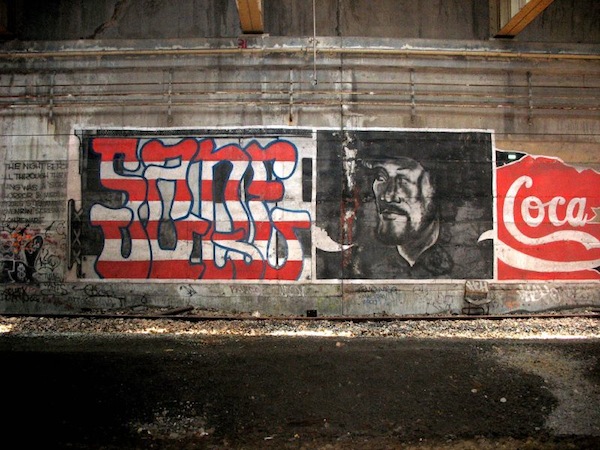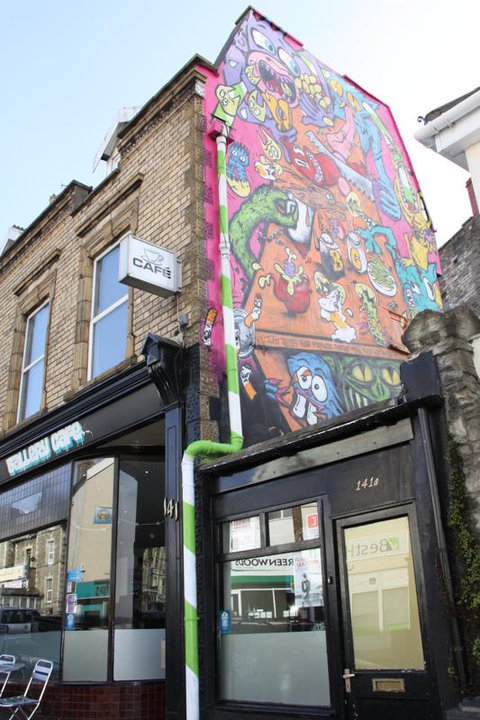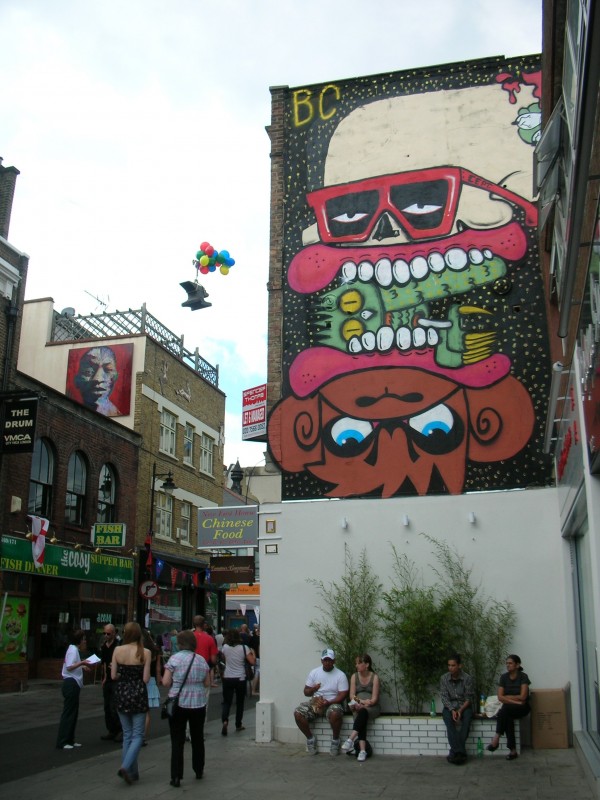
In the beginning, at a time when rebellion was in the air, graffiti was a call to arms. The late 60s and 70s saw disenfranchised youths, first of Philadelphia and then New York, take to the streets equipped with marker pen and spray can. Seeking to re-claim their city, in much the same way as the Situationists and their revolutionary politics in Europe, these youths not only challenged the geographies of our urban settlements but also influenced generations of writers, artists, photographers and today’s new breed of urban creatives.
Whilst the 1970s style wars on New York’s subways saw the evolution from tag, to dub and finally to end to end burners, the 1990s saw a new change, the evolution into what can be best described as street art. Influenced by the New York subway writers and early street art pioneers such as Fekner, Haring, Hambleton and Holzer, a new wave of artists led by Shepard Fairey, Barry McGee and Blek le Rat revolutionised the way art was produced and displayed to the public on the street. But before I get into any arguments about definitions, graff, street art or the hideously named ‘urban art’ – to me, street art marks a shift from letter to logo and into new forms of artistic expression; stickers, stencils, paste-ups and installations all sitting alongside their traditional graffiti counterparts feeding off the same anarchic roots.
This shift towards new means of expression was an important milestone as it was not the only change taking place in our cities, for the 1990s also saw the increased privatisation of our public spaces – perhaps shifts and changes that actually went hand in hand. With the aim of regenerating our city centres to draw back shoppers from the badly designed out of town shopping centres, authorities up and down the UK formulated new rules and regulations dominated by all seeing CCTV.
Now managed to exclude illicit traders, skateboarders, Big Issue sellers, tramps, beggars and vandals with spray cans, our city centres took on Disneyland style characteristics. They became spaces for just the middle classed shopper and the dazzling lights of advertisement. But as I said, this shift in city design almost went hand in hand with the evolution of graff into new forms of street art expression. It was almost as if city management promoted this new form of art on the streets.
Over the last decade, whist out cities have becomes increasingly privatised and commodified, street art has grown. A hybrid of anarchy, avant-garde practises and the undertones of subculture disorder, street art aims to restructure out cities away from the visual inundation of advertising and image juggernauts like Starbucks and McDonald’s. As Tristan Manco once stated, street art is “in flux between established ideas and new directions.”
However over the last few years, I suppose thanks to a certain stencil artist, amongst others, street art is becoming accepted (to an extent) – Although it must be noted that I say this statement very lightly. Nevertheless, we have seen an increasing number of shop and property owners embracing this raw cultural art form, a far cry from its roots in NYC where Mayor Lindsay claimed it to be vandalistic scrawling committed by kids with mental health problems. And there lies my question, has street art lost its way?
It’s a topic that I have been thinking about for a while, and only last month Burning Candy took out a massive wall in Bristol after getting permission from the building owner, and so it seemed the perfect time to consider the issue and write this piece. Does the increasing legalisation of many pieces of street art remove all their underlying anarchic, rebellious meaning?

The BC wall in Bristol actually provides a good topic of conversation simply because of its content. For one, it is well known about the BC members respect and passion for the roots of graff but more importantly, it is their understanding of each other and of the city. Their work always remains free-form, context sensitive and maintains its rapid reaction to what they see. While the work may be ‘legal’ it is certainly not compromising their unique identity.
To some, BC may not be to their taste, and others may make comparisons to other well-known crews or high profile street artists, but comparisons suck as no one ever agrees. However what can be argued to a conclusion is that this piece by BC is self-expression in its rawest form no matter how you look at it. It is ultimately the end product of a group of artists stamping their own identity on the city.
And you would imagine that the local council are not massive fans as it certainly does not fit into the traditional regeneration policies aimed as creating uniform, safe, clean spaces. BC’s legal wall for the Whitecross Street Party in 2010, for example, was definitely not loved by the Islington Graff Squad, and it was painted over as early as possible the morning after the festival finished!

So back to the main question – has the legality involved in street art removed its historical roots? Is there a time when street art can no longer be considered street? Has the new BC wall lost all meaning because it is legal?
The short answer is no, and certainly not the case with regard to BC. Whilst BC did gain permission for the wall, they have set out to re-appropriate the space in their own way, taking a fresh look at the city and re-personalising it, in a similar way to the Situationists and their quest to adapt their own city spaces. In fact, it could be said that their intervention almost becomes open source urban design or perhaps DIY design – but that’s a whole new topic for debate.
To me, street art makes you think or re-think. It makes you smile as you walk past, or makes you stop and stare, or it makes you completely re-think a space or even a city. Street art takes its visual queues from graffiti and the inundation of advertising, and takes its anarchic feel from the revolutionary politics coined by The Situationists, Dada, CoBRA, The Letterist International, and from the overarching increasing privatisation of our public spaces. As such, street art, whether it is ‘legal’ or ‘illegal’ re-appropriates pristine lifeless city spaces and consequently, as with 1970s NYC subway graffiti, must still be considered two fingers up to the powers that be!
Photos by LL Brainwashed, Shower and mercurialn
